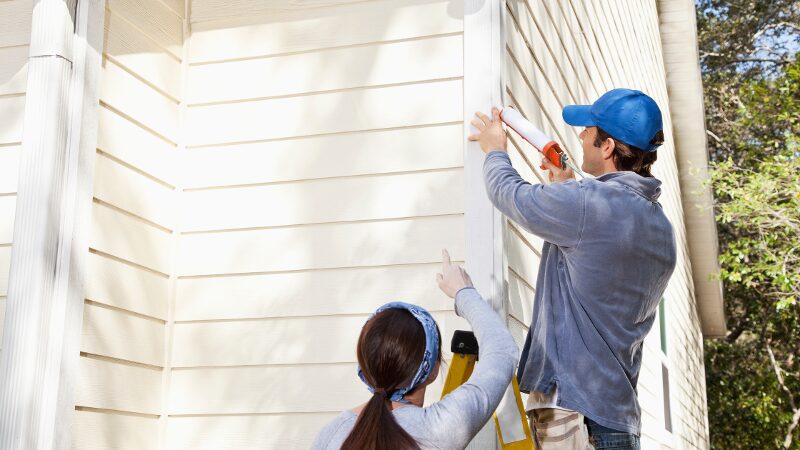When it comes to homes located in Houston, TX, foundation maintenance usually involves keeping relatively constant moisture levels in the soil around the house. Since any type of foundation could suffer early failure due to expansive clay soil, controlling potential volumetric changes that may occur due to variations in the soil moisture content is the only way to prevent damage and ensure your foundation will last for decades, just as it is supposed to.
The good news is that moisture variations along with volume changes in clay soil can be prevented by performing some simple foundation maintenance tasks, such as:
Identifying and Addressing Any Problems That May Affect Your Foundation
Specific issues, such as concrete spalling and/or cracks that may occur in different areas of your foundation and/or home, are the first indicators of potential foundation failure. Thus, if you observe that an area of your foundation has become brittle and started to flake off, or you notice any cracks developing in different home components, such as foundation piers, don’t ignore them.
Catching and fixing concrete spalling, cracks, or other problems early will prevent water and moisture from penetrating deeper into the structure and causing further damage. If the same or more severe issues reappear after the repair in the exact same areas, or other issues start to affect different parts of your home, the problem might be more serious than you first thought. In that case, it’s best to call in a professional to investigate the issue further.
Since concrete spalling and cracks often arise from expansive clay soil that has dried out, maintaining the ground around your foundation moisture throughout the year is the easiest way to prevent foundation damage.
Getting Rid of Standing Water
While keeping the soil around your home evenly moist can help you avoid a series of foundation problems, too much water pooling near your home could lead to numerous structural issues down the road. That’s mainly because most foundations are made of concrete, which is a porous material that absorbs water and moisture easily.
To make certain this doesn’t happen, the land around your foundation should be graded to direct rainwater away from your home. This will prevent the soil underneath your foundation from becoming excessively wet. To maintain a proper slope around your home, you might need to regrade your yard every few years. In addition to maintaining proper grading, a few more things you can do to avoid foundation problems due to excess water include choosing the right downspout system, cleaning your gutters twice a year, and installing an additional drainage system.
Fixing Water Leaks
The main advantage of exposed pipes is that homeowners can notice leaks easily. If they can see the leaks, they can also see and fix the root cause of the problem. Conversely, hidden plumbing leaks could lead to extensive damage over time. That’s simply because these leaks aren’t visible. However, there are a few telltale signs (e.g. musty smells and mold on your interior or exterior walls) that may indicate you have a hidden plumbing leak.
Besides looking for signs of excess moisture, another way to check for hidden leaks is to monitor your water meter’s low-flow indicator. For this, you need to turn off all water-using appliances, such as faucets, dishwasher, washing machine, sprinklers, soaker hoses, etc. Then, check the low-flow indicator, which is typically shaped like a small triangle or star. If it moves, you have a leak. A higher water bill is another good indicator that you have a leak in your plumbing system.
To prevent plumbing problems, it’s advisable to have a plumbing inspection carried out after every winter, particularly if there were days with below-freezing temperatures. Typically, an experienced plumber can catch and repair pipe failure before extensive damage occurs.
Using Root Barriers for Plants That Grow too Close to Your Home
While the shade of the trees and plants growing near your Houston home can be a real blessing, particularly during the hotter summer months, making sure that no roots are growing into your foundation is imperative to avoid the problems they could cause. Installing root barriers is an effective way to prevent roots from encroaching on your foundation and sewer line. However, remember that tall trees and plants usually require a lot of water during the summer, which can ultimately result in damage to your foundation.
Performing Regular Inspections
Inspecting your home twice a year could help you catch foundation issues early. When walking around your property, look for things like small or large cracks, bowing walls, sagging roof areas, tilting home elements, and door/window frames that look like they no longer fit inside wall openings. Also, make sure that you inspect the interior of your home and your crawlspace if you have a pier and beam foundation.
Performing the aforementioned foundation maintenance tasks could help you avoid serious foundation damage along with expensive repairs. However, seasonal changes could still cause the soil around your foundation to change. If you think you might be dealing with any foundation problems, let our professionals at Allied Foundation help. To get started, contact our office today!

